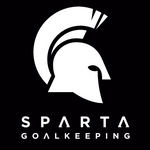
A Year In Goalkeeping - 1976
This year’s Champions League Final will be contested for the first time without fans and also for the first time with cash-rich PSG taking part, after being the competition’s perennial underachievers for the last decade.
PSG are the first French side since Monaco in 2004 to reach the final of Europe’s elite competition and could easily have been joined by compatriots Lyon, had they taken their early chances against the Bayern giants of Bavaria.
Bayern Munich have previous with French opposition in the European Cup Final, having beat St Etienne 1-0 in 1976 in their second European triumph, the only other final where sides of the two neighbouring nations have faced each other.
To pay homage to that, we will take you for a trip back in time. Don’t adjust the picture on your new colour TV or the sound on your Pink Floyd vinyl, the year is 1976.
KIT
England; Admiral - Yellow

Back in an era kits would last for the best part of five years, Ray Clemence and Peter Shilton would sport an iconic yellow number manufactured by Admiral as the national team number one shirt changed hands on many occasions.
The 1970’s was a dismal decade for the England having failed to qualify for the 1974 and 1978 World Cups, but some timeless classics on the shirt front produced by Admiral were a silver lining.
The bright and bold yellow number with the black stripes down the sleeves was a throwback in many ways even at that time, with the collar a return to the pre-1960’s shirts, which became all the range again in the 70’s. It was also almost identical in colour to the shirt worn by Gordon Banks in the 1966 World Cup Final, possibly to serve as a reminder of much happier times.
Despite the comparisons to historic times this kit very much holds its own, particularly with the jet-black shorts which underline the brightness of the shirt even further.
TRANSFER
Gerry Peyton
Ok, admittingly there weren’t too many notable transfers involving goalkeepers in 1976, but one significant to Fulham supporters will be that of Gerry Peyton from top-flight Burnley, who went onto make over 300 appearances for the club over nine years.

Peyton, who later appeared at Euro ’88 and Italia ’90 with the Republic of Ireland, made the move from Lancashire to West London in October 1976 and despite being a fan favourite, never finished above 9th in the second tier in nine seasons at Craven Cottage, even falling to the third for two seasons at the start of the 1980’s.
The man who would later be the club’s goalkeeping coach (and Arsenal’s for over a decade), was named in the Third Division’s PFA Team of the Year in 1982 as Fulham gained promotion back to the Second Division
The club’s fans recently took to social media to remember the impressive stalwart on his 64th birthday recently.
PERFORMANCE
Ian Turner - SOUTHAMPTON V Manchester United, FA Cup Final 1976

Ian Turner was brought in at the start of the Lawrie McMenemy era to Southampton from Grimsby, but little did he know that he would play an integral part in Southampton’s greatest ever success.
The 1976 FA Cup Final was the second in four seasons to see a giant killing of one of the top sides in the country by second division opposition, after Sunderland’s triumph against Don Revie’s Leeds in 1973.
Southampton won by the same score line as the Black Cats three years earlier, beating Manchester United 1-0 and Ian Turner was to thank for his heroic display.
Had it not been for Turner, United could well have been two up early on, as he foiled Gerry Dailly and Gordon Hill with tremendous saves.
As chances came and went, Tommy Docherty’s men grew increasingly frustrated and Bobby Stokes goal seven minutes from time meant United would go home empty handed and the Saints would return to Hampshire with their first ever major honour.
Turner left the club in 1979, missing out on the club’s most successful period in the top division, but his performance in the FA Cup Final will forever be remembered.
